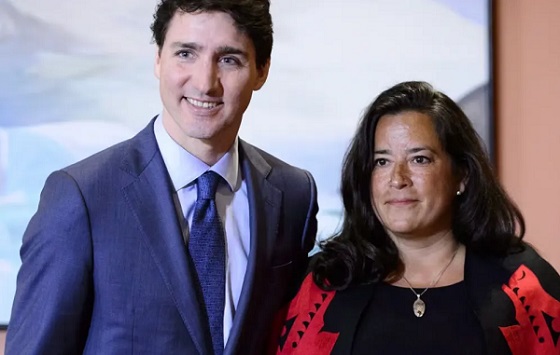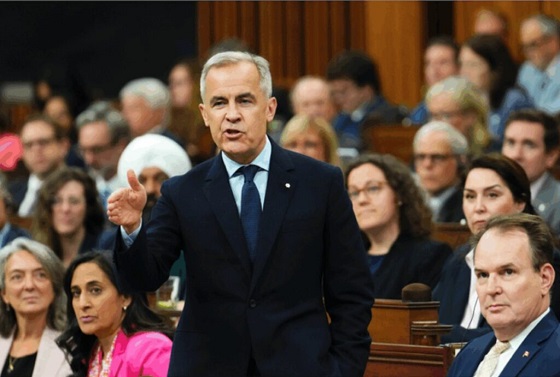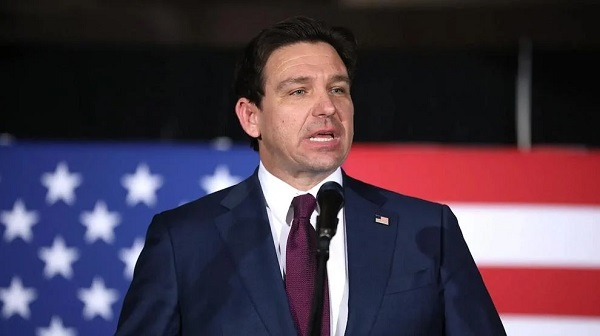National
Watchdog Asks Whether RCMP Brass Shielded Lobbyists in Ottawa’s Influence Scandals

 Sam Cooper
Sam Cooper
From ArriveCAN to SNC-Lavalin, new scrutiny of Ottawa’s regulators raises questions about whether the RCMP and federal oversight bodies have become politically neutered.
Canada’s federal lobbying commissioner and the RCMP are under new scrutiny from a national transparency watchdog demanding to know whether the lobbying regulator has concealed rulings in nine violations that were referred to the Mounties — and later quietly sent back without prosecution — in a wide range of cases from the ArriveCAN procurement imbroglio to the explosive SNC-Lavalin affair, in which a former attorney general told the RCMP they could look at criminal obstruction charges.
The allegations relate to testimony now before a Parliamentary ethics committee, which has revived long-standing concerns from critics about Canada’s politically appointed watchdogs — and about the RCMP itself.
Framing his most pointed suggestion — that the RCMP may be politically neutered — in the form of questions, Duff Conacher of Democracy Watch, a witness before the committee, asked in a release Thursday:
“Did former RCMP Commissioner Brenda Lucki let off the lobbyists because she was appointed by and served at the pleasure of former Prime Minister Justin Trudeau? Did … current RCMP Commissioner Michael Duheme let off the lobbyists so Trudeau would appoint him first as Interim Commissioner in March 2023 and then as Commissioner in April 2024?”
Conacher’s statement presses for the release of nine rulings by Lobbying Commissioner Nancy Bélanger — cases referred to the RCMP and later returned to her office without charges. He accuses Bélanger’s office of failing to release those rulings for more than a year, despite access-to-information requests dating back to 2023.
In Conacher’s October 30 release, Democracy Watch accused both the RCMP and the Commissioner’s office of “blatantly violating” the Access to Information Act. The hidden cases, the watchdog said, may involve unregistered or unethical lobbying by major corporations including Facebook, WE Charity, SNC-Lavalin, and Imperial Oil.
“By continuing to hide her rulings on nine lobbying violations, Commissioner Bélanger is covering up scandalous situations, protecting the lobbyists and the public officials they were lobbying,” Conacher said. “It’s shameful that the RCMP, whose top officers are chosen by and serve at the pleasure of the ruling-party Cabinet, continue to take so long to investigate lobbyists who violate the law — and that they fail to prosecute almost all violations.”
Renewing his attack on RCMP leadership, Conacher added: “Their negligently bad enforcement record is more clear evidence that a new, fully independent anti-corruption federal police and prosecution force is needed.”
Conacher cites hearing evidence that Bélanger testified before the House Ethics Committee on April 16, 2024, acknowledging that her office had referred 15 cases to the RCMP since 2018 — and that the Mounties had “let off” the lobbyists in nine of them. In her most recent appearance on October 6, 2025, she updated that total to 18 cases referred, with 10 returned without charges, two prosecutions completed, two “in discussion,” and two still under investigation, Conacher said.
Conacher pointed to Bélanger’s confrontational exchange over the ArriveCAN procurement scandal with Conservative MP Michael Barrett during the April 2024 hearings.
“I wrote you about a month ago regarding GC Strategies. This is the Liberal government’s hand-picked favourite IT firm. They don’t do work on the applications but collect a commission for connecting the government with unknown firms,” Barrett said. “Can you tell us today if you’re investigating GC Strategies or its principals for contravening the Lobbying Act?”
“As I told you in the letter, I’m very much aware of the facts of that case, and I cannot confirm whether I’m investigating. You know that I do that because I do not want to jeopardize a possible RCMP investigation,” Bélanger answered.
Barrett then listed the company’s reported meetings with senior officials across government, including former Chief Information Officer Paul Girard and a series of departmental directors.
While contracting rules were breached, no criminal charges have been laid. In June 2025, Public Services and Procurement Canada barred GC Strategies from federal contracts for seven years. The government also barred two other firms involved in the ArriveCAN project — Dalian Enterprises and Coradix Technology Consulting — from future federal tenders.
The ArriveCAN app was launched in April 2020 as a digital tool to track traveller health information and customs declarations during the COVID-19 pandemic. Auditor General Karen Hogan later reported that poor record-keeping and excessive reliance on outside contractors caused the project’s cost to balloon from an initial $2.35 million to about $60 million, exposing what she called “a breakdown of basic management controls.” According to her report, GC Strategies alone was awarded more than $19 million for its share of the contracts.
An independent audit by the Office of the Auditor General of Canada found that the federal government awarded 106 contracts valued at approximately $92.7 million between April 2015 and March 2024, many without competition.
Conacher’s most recent demand for disclosure dovetails with the committee’s ongoing probe of the Conflict of Interest and Ethics Commissioner, following testimony by former Privy Council Clerk Michael Wernick. In that tense hearing earlier this week, Wernick was pressed on whether prime ministers’ conflicts of interest should be policed internally through “ethics screens,” or whether blind trusts and full public disclosure are required. Wernick defended the current system as “one tool in a broader toolbox,” while Conservative MPs Michael Barrett and Michael Cooper countered that it leaves Canadians relying on “hope and trust.”
The hearings also raised concerns about Prime Minister Mark Carney’s extensive Brookfield holdings, now shielded by an ethics screen covering about 100 files — what Wernick called “the most extensive private-sector record since Paul Martin.”
The parallels between the Bélanger and Wernick hearings highlight the same structural concerns: officials accountable to the Prime Minister are also responsible for policing the Prime Minister and Cabinet’s conflicts. For Democracy Watch, that circular system — extending from the Lobbying Commissioner and Ethics Commissioner to the RCMP Commissioner — represents not oversight, but insulation.
Subscribe for free to receive new posts and support my work.
Energy
Liberals Twisted Themselves Into Pretzels Over Their Own Pipeline MOU

From Energy Now
By Margareta Dovgal
Playing politics with pipelines is a time-honored Canadian tradition. Recent events in the House of Commons offered a delightful twist on the genre.
The Conservatives introduced a motion quoting the Liberals’ own pipeline promises laid out in the Memorandum of Understanding (MOU) with Alberta, nearly verbatim. The Liberals, true to form, killed it 196–139 with enthusiastic help from the NDP, Bloc, and Greens.
We all knew how this would end. Opposition motions like this never pass; no government, especially not one led by Mark Carney, is going to let the opposition dictate the agenda. There’s not much use feigning outrage that the Liberals voted it down. The more entertaining angle has been watching closely as Liberal MPs twist themselves into pretzels explaining why they had to vote “no” on a motion that cheers on a project they claim to support in principle.
Liberal MP Corey Hogan dismissed the motion as “game-playing” designed to “poke at people”.
And he’s absolutely right to call it a “trap” for the Liberals. But traps only work when you walk into them.
Indigenous Services Minister Mandy Gull-Masty deemed the motion an “immature waste of parliamentary time” and “clearly an insult towards Indigenous Peoples” because it didn’t include every clause of the original agreement. Energy Minister Tim Hodgson decried it as a “cynical ploy to divide us” that “cherry-picked” the MOU.
Yet the prize for the most tortured metaphor goes to the prime minister himself. Defending his vote against his own pipeline promise, Carney lectured the House that “you have to eat the entire meal, not just the appetizer.”
It’s a clever line, and it also reveals the problem. The “meal” Carney is serving is stuffed with conditions. Environmental targets or meaningful engagement with Indigenous communities aren’t unrealistic asks. A crippling industrial carbon price as a precondition might be though.
But the prime minister has already said the quiet part out loud.
Speaking in the House a few weeks ago, Carney admitted that the agreement creates “necessary conditions, but not sufficient conditions,” before explicitly stating: “We believe the government of British Columbia has to agree.”
There is the poison pill. Handing a de facto veto to a provincial government that has spent years fighting oil infrastructure is neither constitutionally required nor politically likely. Elevating B.C.’s “agreement” to a condition, which is something the MOU text itself carefully avoids doing, means that Carney has made his own “meal” effectively inedible.
Hodgson’s repeated emphasis that the Liberal caucus supports “the entire MOU, the entire MOU” only reinforces this theory.
This entire episode forces us to ask whether the MOU is a real plan to build a pipeline, or just a national unity play designed to cool down the separatist temperature in Alberta. My sense is that Ottawa knew they had to throw a bone to Premier Danielle Smith because the threat of the sovereignty movement is gaining real traction. But you can’t just create the pretense of negotiation to buy time.
With the MOU getting Smith boo’ed at her own party’s convention by the separatists, it’s debatable whether that bone was even an effective one to throw.
There is a way. The federal government has the jurisdiction. If they really wanted to, they could just do it, provided the duty to consult with and accommodate Indigenous peoples was satisfied. Keep in mind: no reasonable interpretation equates Section 35 of the Charter to a veto.
Instead, the MOU is baked with so many conditions that the Liberals have effectively laid the groundwork for how they’re going to fail.
With overly-hedged, rather cryptic messaging, Liberals have themselves given considerable weight to a cynical theory, that the MOU is a stalling tactic, not a foundation to get more Canadian oil to the markets it’s needed in. Maybe Hodgson is telling the truth, and caucus is unified because the radicals are satisfied that “the entire MOU” ensures that a new oil pipeline will never reach tidewater through BC.
So, hats off to the legislative affairs strategists in the Conservative caucus. The real test of Carney’s political power continues: can he force a caucus that prefers fantasy economics into a mold of economic literacy to deliver on the vision Canadians signed off on? Or will he be hamstrung trying to appease the radicals from within?
Margareta Dovgal is managing director of Resource Works Society.
Business
Ottawa Pretends To Pivot But Keeps Spending Like Trudeau

From the Frontier Centre for Public Policy
New script, same budget playbook. Nothing in the Carney budget breaks from the Trudeau years
Prime Minister Mark Carney’s first budget talks reform but delivers the same failed spending habits that defined the Trudeau years.
While speaking in the language of productivity, infrastructure and capital formation, the diction of grown-up economics, it still follows the same spending path that has driven federal budgets for years. The message sounds new, but the behaviour is unchanged.
Time will tell, to be fair, but it feels like more rhetoric, and we have seen this rhetoric lead to nothing before.
The government insists it has found a new path, one where public investment leads private growth. That sounds bold. However, it is more a rebranding than a reform. It is a shift in vocabulary, not in discipline. The government’s assumptions demand trust, not proof, and the budget offers little of the latter.
Former prime ministers Jean Chrétien and Paul Martin did not flirt with restraint; they executed it. Their budget cuts were deep, restored credibility, and revived Canada’s fiscal health when it was most needed. Ottawa shrank so the country could grow. Budget 2025 tries to invoke their spirit but not their actions. The contrast shows how far this budget falls short of real reform.
Former prime minister Stephen Harper, by contrast, treated balanced budgets as policy and principle. Even during the global financial crisis, his government used stimulus as a bridge, not a way of life. It cut taxes widely and consistently, limited public service growth and placed the long-term burden on restraint rather than rhetoric. Carney’s budget nods toward Harper’s focus on productivity and capital assets, yet it rejects the tax relief and spending controls that made his budgets coherent.
Then there is Justin Trudeau, the high tide of redistribution, vacuous identity politics and deficit-as-virtue posturing. Ottawa expanded into an ideological planner for everything, including housing, climate, childcare, inclusion portfolios and every new identity category.
The federal government’s latest budget is the first hint of retreat from that style. The identity program fireworks are dimmer, though they have not disappeared. The social policy boosterism is quieter. Perhaps fiscal gravity has begun to whisper in the prime minister’s ear.
However, one cannot confuse tone for transformation.
Spending still rises at a pace the government cannot justify. Deficits have grown. The new fiscal anchor, which measures only day-to-day spending and omits capital projects and interest costs, allows Ottawa to present a balanced budget while still adding to the deficit. The budget relies on the hopeful assumption that Ottawa’s capital spending will attract private investment on a scale economists politely describe as ambitious.
The housing file illustrates the contradiction. New funding for the construction of purpose-built rentals and a larger federal role in modular and subsidized housing builds announced in the budget is presented as a productivity measure, yet continues the Trudeau-era instinct to centralize housing policy rather than fix the levers that matter. Permitting delays, zoning rigidity, municipal approvals and labour shortages continue to slow actual construction. These barriers fall under provincial and municipal control, meaning federal spending cannot accelerate construction unless those governments change their rules. The example shows how federal spending avoids the real obstacles to growth.
Defence spending tells the same story. Budget 2025 offers incremental funding and some procurement gestures, but it avoids the core problem: Canada’s procurement system is broken. Delays stretch across decades. Projects become obsolete before contracts are signed. The system cannot buy a ship, an aircraft or an armoured vehicle without cost overruns and missed timelines. The money flows, but the forces do not get the equipment they need.
Most importantly, the structural problems remain untouched: no regulatory reform for major projects, no tax-competitiveness agenda and no strategy for shrinking a federal bureaucracy that has grown faster than the economy it governs. Ottawa presides over a low-productivity country but insists that a new accounting framework will solve what decades of overregulation and policy clutter have created. The budget avoids the hard decisions that make countries more productive.
From an Alberta vantage, the pivot is welcome but inadequate. The economy that pays for Confederation receives more rhetorical respect, yet the same regulatory thicket that blocks pipelines and mines remains intact. The government praises capital formation but still undermines the key sectors that generate it.
Budget 2025 tries to walk like Chrétien and talk like Harper while spending like Trudeau. That is not a transformation. It is a costume change. The country needed a budget that prioritized growth rooted in tangible assets and real productivity. What it got instead is a rhetorical turn without the courage to cut, streamline or reform.
Canada does not require a new budgeting vocabulary. It requires a government willing to govern in the country’s best interests.
Marco Navarro-Genie is vice-president of research at the Frontier Centre for Public Policy and co-author with Barry Cooper of Canada’s COVID: The Story of a Pandemic Moral Panic (2023).
-

 Great Reset2 days ago
Great Reset2 days agoViral TikTok video shows 7-year-old cuddling great-grandfather before he’s euthanized
-

 Daily Caller2 days ago
Daily Caller2 days agoChinese Billionaire Tried To Build US-Born Baby Empire As Overseas Elites Turn To American Surrogates
-

 Alberta2 days ago
Alberta2 days agoSchools should go back to basics to mitigate effects of AI
-

 Business2 days ago
Business2 days agoMajor tax changes in 2026: Report
-

 International2 days ago
International2 days agoTwo states designate Muslim group as terrorist
-

 Digital ID1 day ago
Digital ID1 day agoCanada releases new digital ID app for personal documents despite privacy concerns
-

 Censorship Industrial Complex2 days ago
Censorship Industrial Complex2 days agoDeath by a thousand clicks – government censorship of Canada’s internet
-

 Bruce Dowbiggin1 day ago
Bruce Dowbiggin1 day agoNFL Ice Bowls Turn Down The Thermostat on Climate Change Hysteria







